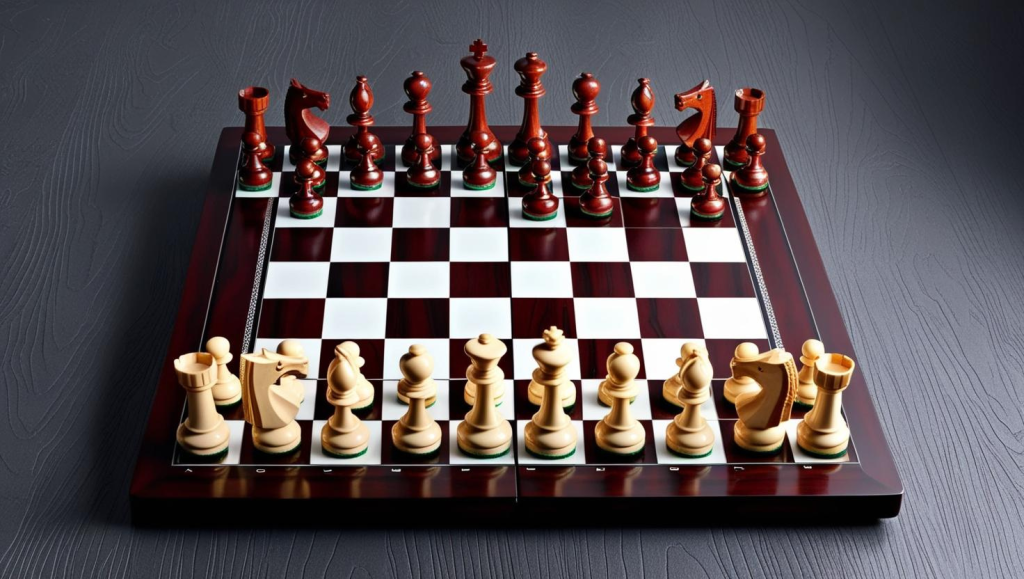The concepts of strategy and tactics are fundamental to achieving desired outcomes in a multitude of human endeavors. From the intricate dance of military campaigns to the competitive arenas of business and sports, and even within the intellectual depths of games like chess, the ability to plan strategically and execute tactically often dictates success or failure. While these terms are frequently used, a clear understanding of their individual meanings and their crucial relationship is often lacking. This article aims to demystify strategy and tactics, exploring their definitions, tracing their historical evolution, highlighting the importance of precise terminology, examining their distinct time horizons, providing illustrative examples, and ultimately elucidating the symbiotic connection between them.
Defining Strategy and Tactics: Ends and Ways
At their core, strategy and tactics represent different levels of planning and action. Strategy can be defined as the overarching plan or long-term vision that guides actions towards a final goal.1 It embodies the “what” and “why” behind the decisions made and outlines the intended path to reach the desired destination.2 In essence, it serves as a roadmap, providing a framework for how an organization or individual will achieve its objectives.5 Conversely, tactics are the specific actions or short-term steps undertaken to implement the strategy.1 They represent the “how” of achieving the broader strategic goals and involve the day-to-day operations and immediate decisions necessary to progress along the strategic path.6
These fundamental differences become clearer when examined across various contexts. In a military setting, strategy involves the comprehensive campaign plan designed to win a war, encompassing objectives such as securing key territories or weakening the enemy’s resolve.7 Tactics, within this framework, are the specific battlefield maneuvers employed in individual engagements, including flanking movements, ambushes, or the formation of defensive lines.7 Shifting to the realm of business, strategy manifests as the long-term plan to achieve organizational objectives, such as attaining market dominance through innovation or establishing a position as the cost leader.5 The corresponding tactics would be the specific marketing campaigns launched, the initiatives undertaken for product development, or the adjustments made to pricing strategies.5 In the competitive world of sports, strategy is akin to the game plan devised to win a championship, which might involve focusing on a team’s inherent strengths or exploiting the identified weaknesses of opponents.10 Tactics then translate into the specific plays executed, the formations adopted by players, or the in-game adjustments made by coaches.10 Even in the intellectual battleground of chess, strategy and tactics play distinct roles. Strategy in chess involves the long-term positional play and planning, such as striving to control the center of the board or effectively developing one’s pieces.12 Tactics, on the other hand, are the immediate moves and combinations employed to gain a tangible advantage, like executing forks, pins, or skewers against the opponent’s pieces.12
Despite their differences, it is crucial to recognize that strategy and tactics are not mutually exclusive; rather, they are inherently interdependent.1 A well-conceived strategy provides the necessary direction and framework for the selection and implementation of effective tactics. Conversely, even the most brilliant strategy will remain unrealized without the successful execution of appropriate tactics. As the ancient Chinese military strategist Sun Tzu astutely observed, “Strategy without tactics is the slowest route to victory. Tactics without strategy is the noise before defeat”.14 This timeless wisdom underscores the essential and complementary nature of these two concepts.
A Historical Journey: Tracing the Roots
To fully appreciate the significance of strategy and tactics, it is beneficial to explore their historical origins, which are deeply rooted in the annals of military history. The earliest known discussions of strategy can be traced back to ancient China, with seminal works like Sun Tzu’s “The Art of War,” written between 400 and 200 B.C..7 Sun Tzu’s writings emphasized the importance of meticulous planning, skillful tactical positioning, and the critical role of gathering intelligence about the enemy.20 The emergence of strategic thought during this period was fundamentally driven by the persistent need for peoples to effectively defeat their adversaries, highlighting the intrinsic link between strategy and the dynamics of conflict and competition.7
The very term “strategy” finds its etymological roots in the Greek word “strategos,” which translates to “general”.7 In ancient Athens, the “strategoi” were not merely military commanders; they held a unique position of combined political and military authority, embodying the very essence of strategic leadership.21 The ancient world provides a rich tapestry of early military strategies. The 19th-century German military historian Hans Delbrück, through his study of the Peloponnesian War, drew a fundamental distinction between strategies aimed at the complete overthrow of the opponent and those focused on their gradual exhaustion.21 Figures like Alexander the Great exemplified strategies characterized by speed, surprise, and the application of overwhelming force in his conquests against the Persian empire.22 The Roman approach to war, as chronicled from the Greek historian Polybius to Niccolò Machiavelli, revealed a collective strategy focused on dividing enemies, forging strategic alliances, and pursuing even the most formidable adversaries with relentless determination.21 Alongside these overarching strategies, ancient warfare also witnessed the development of various tactics. Primitive tactics such as ambushes and raids, relying heavily on concealment and the element of surprise, were common in tribal societies.25 More organized tactics emerged with the development of formations like the Greek phalanx, a dense and formidable block of heavily armed infantry.26 The Roman legions, known for their adaptability, employed a flexible maniple system that allowed them to adjust to diverse combat scenarios, along with specialized formations such as the protective tortoise and the aggressive wedge.27 The Carthaginian general Hannibal’s masterful double envelopment maneuver at the Battle of Cannae stands as a timeless example of tactical brilliance on the ancient battlefield.23
The principles of strategy and tactics also found their way into the realm of games, with chess being a prime example. Originating in India around the 6th century as “chaturanga,” the game mirrored the four divisions of an ancient army.34 Within the framework of chess, the concepts of strategy and tactics are deeply ingrained. Strategy in chess pertains to the long-term positional play and the formulation of plans that consider factors like pawn structure and the safety of the king.12 Tactics, in contrast, involve the immediate calculations and combinations of moves aimed at exploiting short-term opportunities and gaining material or positional advantages.12 Early chess strategy, particularly within the Italian school of thought, emphasized rapid piece development and aggressive attacks.36 Over time, strategic thinking in chess has evolved significantly, encompassing concepts like hypermodernism, which challenged classical principles of center control, and the profound influence of computer analysis, which has introduced new dimensions to understanding optimal play.37
The historical journey of strategy and tactics reveals that the military domain served as the primary crucible for their development and conceptualization. The fundamental need to achieve victory in warfare spurred the initial articulation and refinement of these concepts. Subsequently, the principles of strategic thinking and tactical execution have been adopted and adapted across a diverse range of fields, including the complexities of business competition and the intellectual challenges of games like chess.
The Power of Precision: Terminology Matters
In any field that relies on planning and execution, the precise use of terminology is paramount. The terms “strategy” and “tactics,” while often used interchangeably in casual conversation, carry distinct meanings, and any confusion between them can lead to significant errors in understanding and, ultimately, in the effectiveness of actions taken.40 For instance, when a specific action or method, which is essentially a tactic, is mistakenly elevated to the status of a strategy, it can result in a rigid approach that hinders adaptability in the face of changing circumstances.40 Consider a business that views a particular social media platform as its core “strategy,” rather than recognizing it as a tactic to achieve a broader strategic goal like enhancing brand awareness or driving customer engagement. If that platform’s popularity wanes or its algorithm changes drastically, the business may find itself without a viable alternative if it hasn’t developed a more comprehensive strategy.
Conversely, pursuing a collection of individual tactics without the guidance of a clear overarching strategy can lead to fragmented efforts and a lack of overall direction.41 Imagine a marketing team implementing various social media campaigns, email blasts, and content creation initiatives without a defined strategic objective for how these activities are meant to contribute to the company’s long-term growth or market positioning. While each tactic might be executed competently in isolation, the absence of a unifying strategy can result in wasted resources and a failure to achieve meaningful results. In the business world, the danger of confusing tactics with strategy is well-illustrated by the example of outsourcing.40 If a company perceives outsourcing a function as the “strategy” itself, rather than a tactic to achieve a strategic objective like cost reduction or improved efficiency, it might persist with this approach even if it begins to compromise quality or customer satisfaction, losing sight of the bigger picture. Similarly, in military affairs, a relentless focus on winning individual battles (tactics) without a clear strategic objective for the entire war can lead to Pyrrhic victories, where the costs outweigh the gains, or even ultimate defeat.42
The importance of distinguishing between strategy and tactics is powerfully encapsulated in Sun Tzu’s wisdom: “Strategy without tactics is the slowest route to victory. Tactics without strategy is the noise before defeat”.14 This quote highlights that while both are indispensable, they serve fundamentally different roles. Strategy provides the essential framework and long-term vision, while tactics are the specific actions that, when aligned with the strategy, propel progress towards the ultimate goal. Clear and accurate terminology ensures that all stakeholders in any endeavor share a common understanding of the objectives and the methods to achieve them, fostering more effective communication, planning, and execution.
Time and Planning: Short-Term Actions, Long-Term Vision
A fundamental distinction between strategy and tactics lies in their associated time horizons. Tactics are generally characterized by a short-term focus, concerned with immediate actions and the results they produce.1 The timeframe for tactical planning and execution typically spans from days to months, and in some cases, up to a year.46 These short-term actions serve as the essential stepping stones that facilitate progress towards the achievement of longer-term strategic goals.48 On the other hand, strategy inherently adopts a long-term orientation, primarily concerned with achieving overarching objectives over extended periods, which can range from months and years to even decades.1 Strategy provides a sustained roadmap for growth and success.50
This difference in temporal focus carries significant implications for planning and decision-making. Tactical decisions often require a high degree of adaptability and responsiveness to immediate feedback, prevailing operational conditions, and any short-term opportunities or challenges that may arise.44 Because tactics are focused on the near term, they can be adjusted more readily in response to changing circumstances or the effectiveness of current strategies.51 In contrast, strategic decisions are designed to establish a stable framework that guides the long-term allocation of resources and ensures alignment across an organization or endeavor towards a commonly understood vision.9 While strategies can be adapted if significant shifts occur in the market or internal conditions, they are generally intended to provide a consistent direction over a more extended period.
The contrasting time horizons of strategy and tactics reflect their distinct yet complementary purposes. Tactics are about effectively navigating the present landscape to serve the overarching goals of the future, while strategy is fundamentally about shaping that future through thoughtful and sustained long-term planning. Achieving lasting success often hinges on the ability to strike a balance between the need for immediate, effective tactical actions and the overarching guidance provided by a robust long-term strategy.52
Enduring Principles, Changing Methods: The Test of Time
History offers numerous examples of strategies that have retained their validity and effectiveness across centuries, adapting to vastly different contexts and challenges. In the military domain, the principle of surprise and deception has proven to be a consistently successful strategy, employed from the ancient ruse of the Trojan Horse to the sophisticated misinformation campaigns of modern warfare.54 The strategy of “divide and conquer,” a method of weakening an opponent by fostering internal divisions or exploiting existing ones, has been a recurring theme in the rise and maintenance of empires and the success of military leaders throughout history.32 The Fabian strategy, characterized by a focus on attrition and the avoidance of decisive battles against a stronger enemy, has also demonstrated its enduring effectiveness in protracted conflicts.56 Furthermore, the fundamental principle articulated by Sun Tzu – the importance of thoroughly knowing both the enemy and oneself – remains a cornerstone of strategic thinking applicable across a wide spectrum of competitive environments.19
Similarly, the business world has witnessed the longevity of certain core strategies. A consistent focus on understanding and meeting customer needs while providing exceptional value has been a driving force behind the enduring success of companies like Starbucks and Amazon, which have adapted their offerings and approaches to evolving customer preferences over decades.60 The strategy of cost leadership, aimed at attracting a broad customer base by consistently offering lower prices than competitors, has proven to be a sustainable model for retail giants like Walmart and automotive manufacturers like Toyota.61 Differentiation through continuous innovation and strong branding has enabled companies like Apple and Tesla to cultivate significant customer loyalty and command premium prices over the long term.61 Finally, the strategy of building a strong and recognizable brand reputation and awareness, as exemplified by iconic brands like Coca-Cola, remains a fundamental pillar of enduring business success.63
In stark contrast to these enduring strategies, many tactics have become obsolete due to advancements in technology, shifts in the nature of warfare, or changes in business practices. In military history, the tactic of massed infantry charges against entrenched machine gun positions, tragically prevalent during World War I, proved to be devastatingly ineffective in the face of modern firepower.64 The use of linear formations in warfare, once a standard tactic in the age of muskets, became exceedingly vulnerable with the advent of more accurate and rapid-firing firearms.66 Similarly, the once-dominant role of cavalry in warfare has significantly diminished with the rise of armored vehicles and air power.64 In the business realm, the tactic of planned obsolescence, once employed to drive repeat sales, is facing increasing consumer backlash and is becoming unsustainable in an era that prioritizes environmental consciousness and product longevity.67 The rigid adherence to traditional 9-to-5 office workdays is increasingly being replaced by more flexible work arrangements to cater to the evolving needs and expectations of the modern workforce.69 Furthermore, a sole reliance on traditional advertising methods has become less effective in reaching target audiences compared to the more personalized and data-driven approaches of digital marketing.70
These examples underscore a critical point: while fundamental strategic principles often possess a remarkable ability to endure over time, the specific tactics employed to implement these strategies must be adaptable and must evolve in response to changing circumstances and technological advancements. A failure to recognize the need for tactical adaptation can render even the most sound strategy ineffective and ultimately lead to obsolescence.
Strategy and Tactics: A Symbiotic Relationship
The relationship between strategy and tactics is one of profound interdependence, where tactics serve as the practical means through which a broader strategy is expressed and brought to fruition in specific situations.44 Tactics are the tangible steps that implement the more abstract framework of strategy.15 This relationship can be effectively illustrated through various analogies. Imagine a journey where the strategy is the chosen destination on a map – for instance, winning a championship or achieving market leadership.71 The tactics, in this analogy, are the specific routes taken and the modes of transportation used to reach that destination, such as the particular plays executed in a game or the specific marketing channels employed by a business.71
Another useful metaphor is that of a blueprint for a house, representing the overall strategy for building a successful business or achieving a significant goal [Implicit]. The individual construction tasks – laying the foundation, building the walls, installing the roof – are analogous to the tactics, the specific actions required to bring the strategic blueprint to life [Implicit]. In the context of sports, the strategy can be likened to the overarching game plan, such as dominating possession in soccer or running a fast-paced offense in basketball.72 The tactics then are the specific plays, formations, and player movements executed during the game to achieve that strategic objective.72 Shifting to the intellectual realm of chess, strategy involves the long-term positioning of pieces to control key areas of the board and create weaknesses in the opponent’s setup.1 Tactics are the immediate, often sharp, moves and combinations used to exploit those weaknesses and gain a material or positional advantage.1 A more conceptual analogy frames strategy as the “why” (the underlying goal) and the “what” (the general approach to achieving it), while tactics represent the “how” – the specific actions and methods used to execute the strategy.3 Strategy sets the overall direction, while tactics are the concrete steps that help one get there.51
These analogies underscore the hierarchical and deeply intertwined nature of strategy and tactics. A well-defined strategy provides the essential framework and direction for the development and implementation of effective tactics. Conversely, even the most meticulously crafted strategy will remain merely a theoretical exercise without the successful execution of well-chosen tactics. This symbiotic relationship highlights that strategy and tactics are not opposing forces but rather two essential sides of the same coin, both indispensable for achieving meaningful success in any complex endeavor.
Conclusion: Mastering the Balance
In conclusion, strategy and tactics, while often conflated, represent distinct yet interdependent concepts crucial for success across diverse fields. Strategy provides the overarching plan and long-term vision, outlining the “what” and “why” of intended actions, while tactics are the specific, short-term steps that implement the strategy, focusing on the “how.” This fundamental difference is further emphasized by their contrasting time horizons, with strategy geared towards long-term goals and tactics addressing immediate needs and actions. The historical evolution of these concepts, particularly within the military domain, reveals enduring strategic principles that have stood the test of time, alongside tactics that have become obsolete due to changing circumstances and technological advancements.
The precise use of the terms “strategy” and “tactics” is vital for clear communication and effective planning, as confusion can lead to misdirected efforts and hinder the achievement of objectives. Ultimately, the relationship between strategy and tactics is symbiotic; a robust strategy requires effective tactics for its realization, and well-chosen tactics must align with the overarching strategic goals. Mastering the balance between a clear long-term vision (strategy) and agile, effective short-term actions (tactics) is the key to navigating complexity and achieving lasting success in an ever-evolving world.
| Feature | Strategy | Tactics |
| Definition | Overarching plan, long-term vision | Specific actions, short-term steps |
| Focus | What and why | How |
| Time Horizon | Long-term (months, years, decades) | Short-term (days, weeks, months) |
| Scope | Broad, organizational-wide | Narrow, specific tasks/initiatives |
| Flexibility | Less flexible, provides a stable framework | More flexible, adaptable to immediate needs |
| Level | Higher-level planning | Operational execution |
| Domain | Enduring Strategy | Obsolete Tactic |
| Military | Surprise and Deception | Massed infantry charges against machine guns |
| Business | Focus on Customer Needs and Value | Planned obsolescence as a primary growth strategy |
| Sports | Exploiting opponent weaknesses | Relying solely on brute force without adaptability |
| Games | Controlling the center (Chess) | Sacrificing all pieces for a quick, unsound attack |









